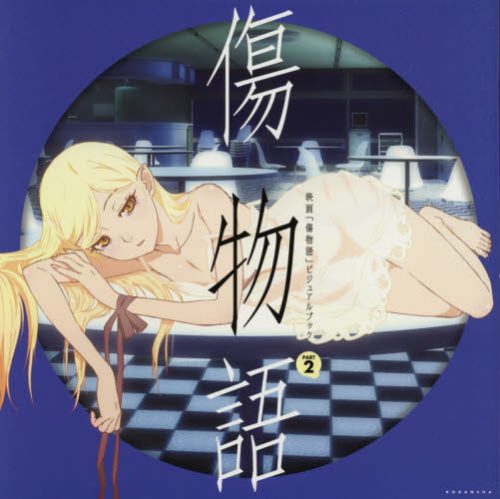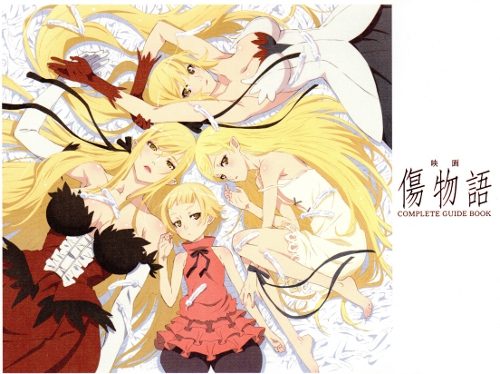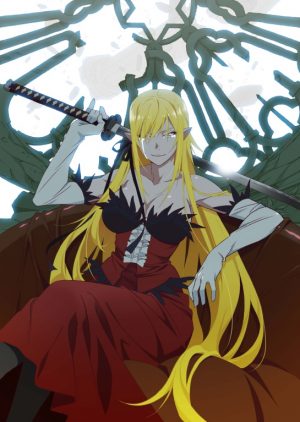
This article is a two-part series. As a brief synopsis, the first article covers the historical context of film noir and how it captures the pessimism of the times and a new outlook on the world. This article will introduce some noir ideas and then specify their inclusion in Kizumonogatari. Using information from the previous article, this article will show the themes of film noir and how they’re applied to the trilogy.
A Tragedy without “Death”
To dispel any illusion one might have of its story, Kizumonogatari begins with a strong statement: “This vampire story will end badly. It will end with everyone being unhappy.” As a prequel to Monogatari, certain things are expected to stay. Characters that appear in the main series shouldn’t die in the film. Thus, to create an unhappy, tragic ending, something else must die: their beliefs.
In the film, the characters are given archetypes and they must fail. These archetypes are their ideals, the things they want to be. To have their ideals crushed and identities shattered—to show that person they want to be no longer exists—is, in essence, killing them. For this article, we’ll examine the relationship between two characters: the protagonist and the femme fatale.
The Dangers of Seduction: the Femme Fatale
In noir films, women are integral to the plot. In Kizumonogatari, not only is she important, she’s clad in red. Taking center stage, she sparks the story’s movement and the protagonist’s demise. She is a woman who lures men into dangerous situations, eventually leading them to their downfall. She is Heart-Under-Blade, a femme fatale.
Traditionally, femme fatales are defined by their sexuality, a tool they wield with cunning. They are charming, selfish, and especially dangerous. In early 20th century American films, the word “vamp” was also used to describe femme fatales. However, despite the sinister nature of this archetype, their characters often evoke empathy. While they have an independence and wit to live on their own, they are often victims of a terrible past.
Heart-Under-Blade’s yearns for death, the only salvation she’ll have from her haunting past. Her sexuality (her power) is borrowed from conventional depictions of vampires, originally demonic, but changed since Bram Stoker’s popular novel Dracula (1897). What was once demonic is now a charming and sophisticated man. In the case of female vampires, a seductress. Aptly, she also charms the main character into solving her problems. Lastly, in final movements of the third film, she becomes a tragic figure. What once made her powerful is now gone. Her independence stolen.
The Failing Hero: the Noir Protagonist
In the movie series, Araragi wants to be an idealized version of himself. He wants to be a suave playboy, but he’s shy about bodily contact. He wants to be brave, but he cowers (initially) at saving Heart-Under-Blade. He wants to be strong, but his fights get him brutally hurt, often making him lose and regrow his limbs. He wants to save everyone, but in the end, he has them give up their “old lives.” In essence, he wants to be a hero, the one that existed before noir films.
In noir films, male protagonists are often anti-heros or social outcasts. They are loners who are cynical and disillusioned, commonly having a dark past and noticeable flaws in their character. They are very human, and given the pessimism of noir, they don’t leave clashes unscathed both physically and mentally.
One of the major themes of Kizumonogatari is “humanity/morality is not intrinsic to humans.” Araragi, despite his transformation into a vampire, remains one of the most human (and flawed) characters in the film. By having Araragi fight his opponents in a specific order (vampire, half-vampire, human), the film escalates, not in action, but in inhumanity. Despite his later opponents being “more human,” their immorality comes into focus.
This contrast is meant to depict Araragi as the hero. He is meant to be righteous, defending both the woman he idealizes (Hanekawa) and the woman he sympathizes with (Heart-Under-Blade). However, reality is cruel. In a gruesome scene absent of her previous charm, Heart-Under-Blade eats a human body. Araragi then realizes what his opponents fought to prevent. He realizes he is not the hero…
He is a noir protagonist.
Final Thoughts

As a fan of both noir and the monogatari series, I was delighted to see how Kizumonogatari was handled. The amount of attention given to these movies is astounding. The flow in which the story adopts noir elements feels skillful and natural. While I wouldn’t consider myself an expert on noir, at the very least, I hope that my appreciation for the film series was shared with you. Likewise, if you enjoyed the article or want to share your insights on the film series, I would love to see your thoughts in the comments!
Recommended Post
The Noir in Kizumonogatari (Part 1)
Recommended Post
6 Anime Like Kizumonogatari [Recommendations]
Recommended Post



